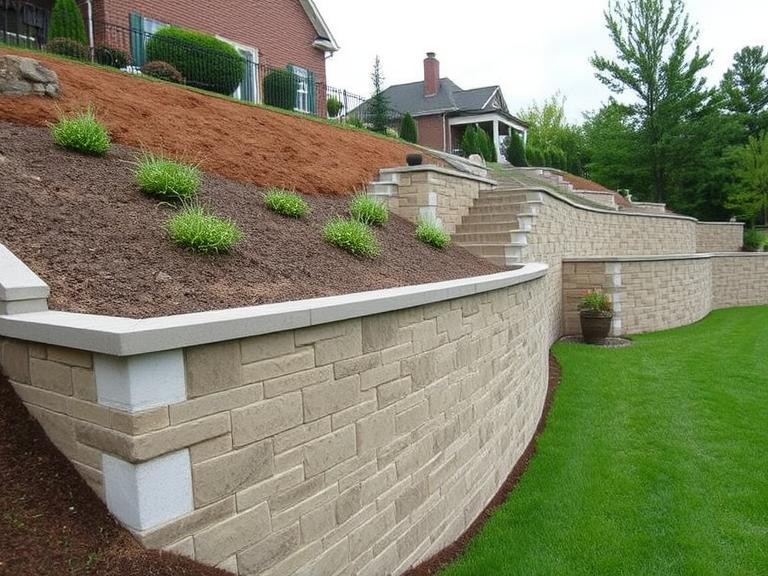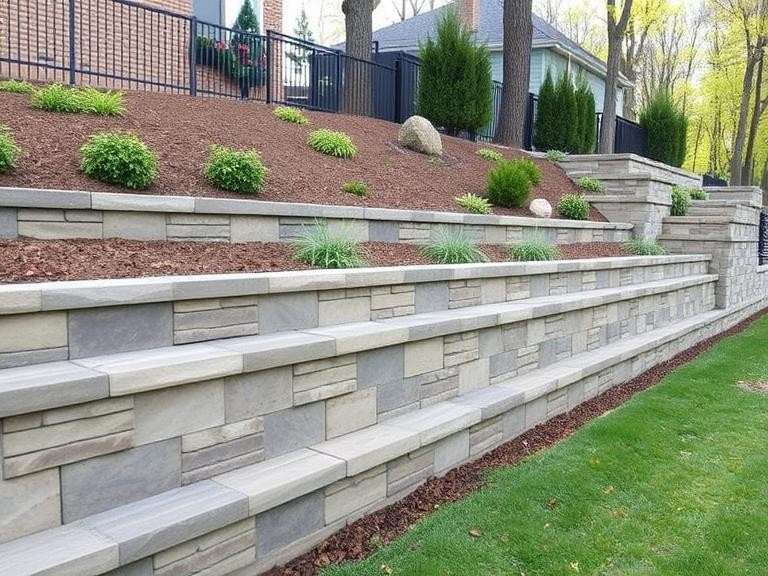Expert Retaining Wall Contractors
Built to Last, Designed to Impress
At Patriots Paving & Masonry Inc., we are skilled retaining wall contractors dedicated to creating sturdy and visually appealing walls that enhance your landscape while preventing soil erosion. Whether you need a decorative garden wall or a heavy-duty retaining wall system, our team delivers durable solutions tailored to your property’s needs.
Why Choose Our Retaining Wall Services?
As a trusted provider of retaining wall services, we understand that a well-constructed wall is more than just a functional barrier. It’s an essential element that adds structure, defines outdoor spaces, and boosts curb appeal. We use high-quality materials and precision techniques to ensure your wall stands strong for years to come.
Benefits of Installing a Retaining Wall
Wondering if a retaining wall is right for your property? Here’s how it can help:
- Prevents soil erosion and manages water runoff.
- Creates usable, level spaces on sloped land.
- Enhances landscape aesthetics and property value.
- Supports heavy loads and stabilizes soil.
Whether you want to prevent landscape damage or create a statement feature, our retaining wall contractors are here to bring your vision to life.
GET FREE CONSULTATION
Our Comprehensive Retaining Wall Solutions
We offer a variety of retaining wall services designed to suit your specific landscape and structural requirements:
1. Retaining Wall Design & Installation
From initial design to final installation, we handle every step of the process. We assess your landscape, recommend the best materials, and build a wall that perfectly complements your property.
2. Retaining Wall Blocks & Materials
Choose from a wide range of materials, including concrete blocks, natural stone, and brick. We help you select the right retaining wall blocks for your desired look, durability, and budget.
3. Custom Retaining Wall Systems
We design and build custom retaining wall systems to meet the unique needs of your property. Whether you need a gravity wall, cantilever wall, or anchored system, we create solutions that provide long-lasting stability and support.
4. Retaining Wall Repairs & Reinforcement
If your existing wall shows signs of wear or damage, we offer expert repair services. We fix cracks, reinforce weakened areas, and improve drainage to restore the wall’s integrity and extend its lifespan.
Trust the Leading Retaining Wall Contractors
At Patriots Paving & Masonry Inc., we pride ourselves on delivering high-quality retaining wall services with precision and care. Our team works closely with you to create a wall that not only serves its purpose but also enhances your outdoor space.


Get a Free Retaining Wall Consultation Today!
Ready to transform your landscape with a durable and beautiful retaining wall? Contact Patriots Paving & Masonry Inc., your go-to retaining wall contractors, for a free consultation and personalized estimate.
